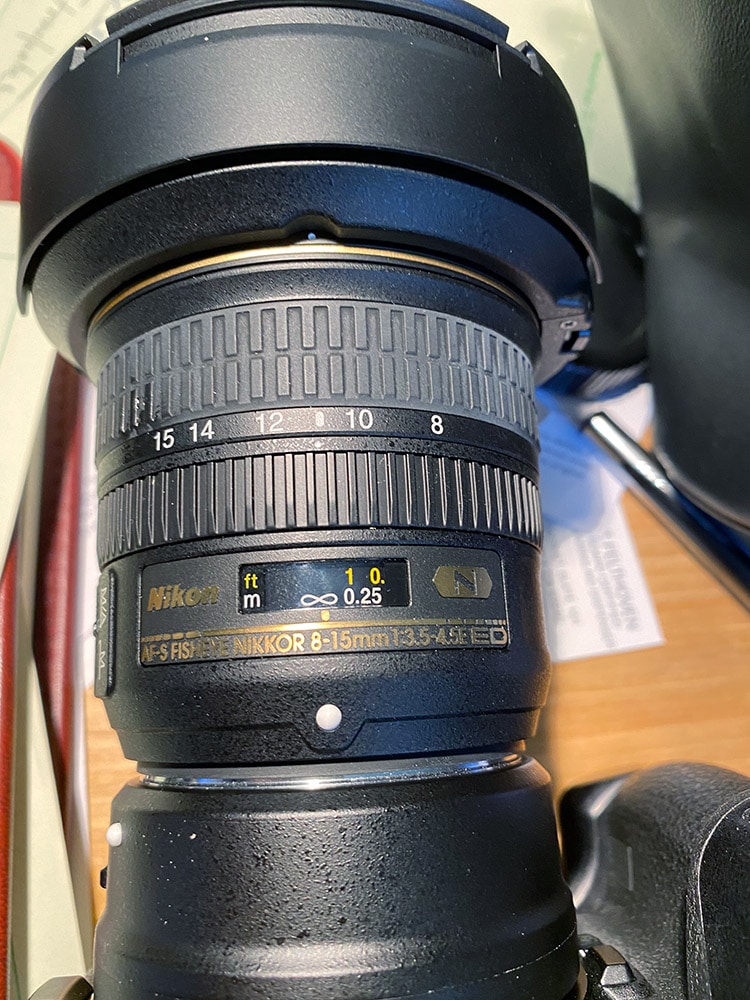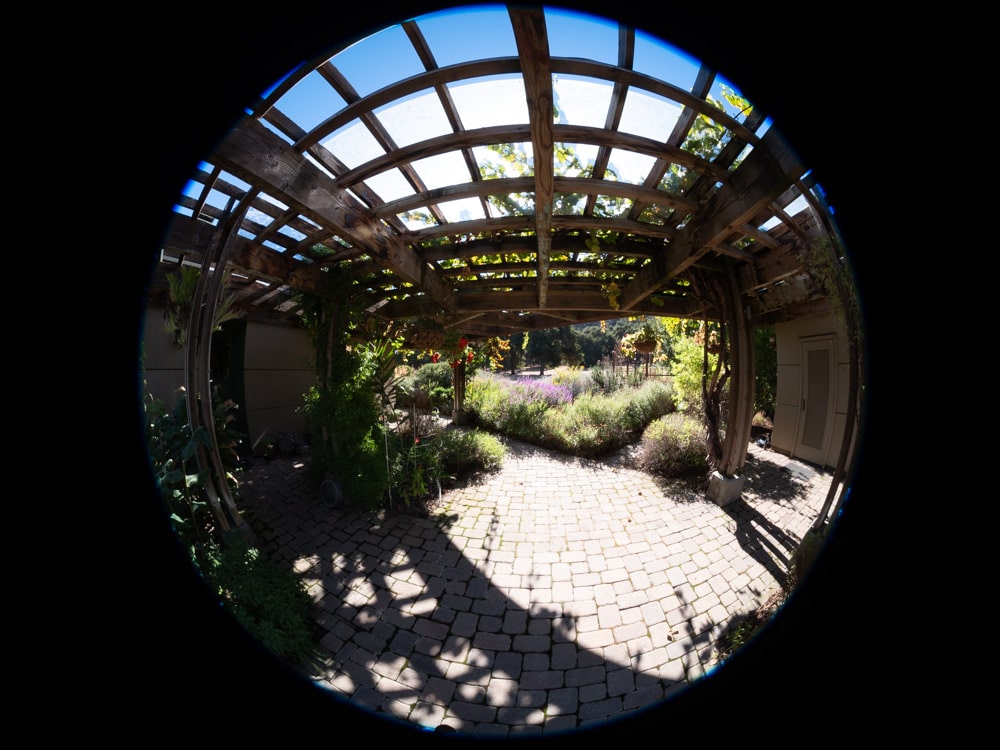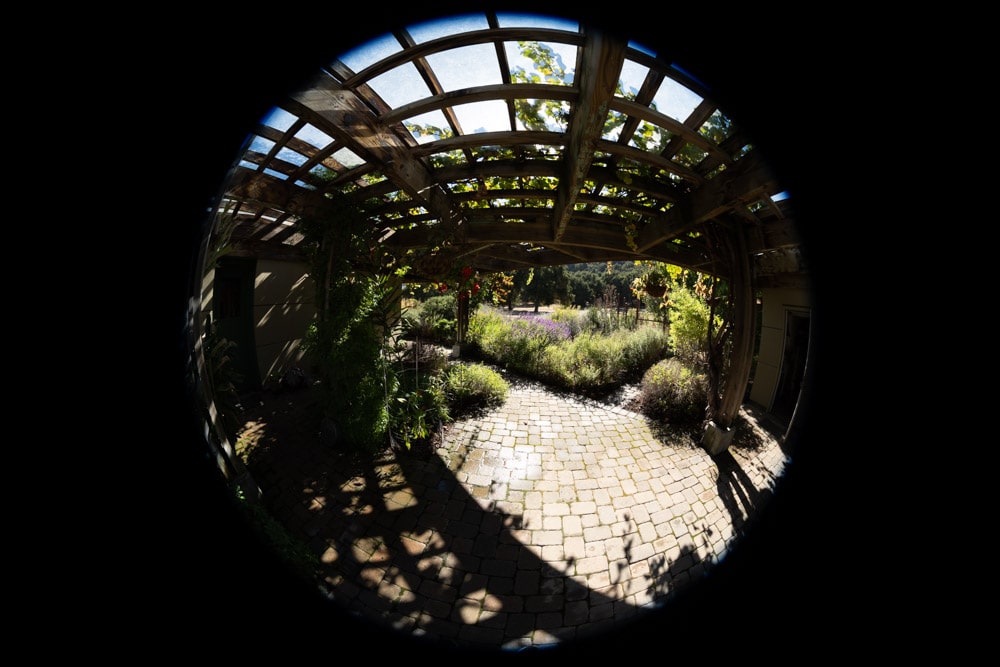Someone asked me if I knew of a full frame fisheye for the GFX. That would be about an 11 mm fisheye. I didn’t know of one, but I do have a Nikon 8-15 mm f/3.5-4.5E zoom fisheye. I mounted it to the GFX 50R with a Kipon F-to-G adapter, and set it to the conveniently placed mark at about 11 mm on the lens barrel.
If you take the hood off, it covers.
Maybe I should have set the lens to a bit under 11 mm.
Don’t get too excited. There are issues:
- This is an E lens, which means there’s no way to set the aperture with a dumb adapter. There’s a workaround where you use a Nikon camera to set the aperture and transfer the lens to a dumb adapter.
- The distance markings on the lens aren’t sized for manual focusing, and they probably won’t be accurate anyway unless you’ve shimmed your adapter to the right length.
If you’ve managed to find a smart adapter for the GFX that takes Nikon E lenses, it’s worth a try.
Putting the lens on a Z7 via a FTZ adapter and setting the focal length to 8 mm gets us this:
That’s a much more convenient way to go. Note the blue ring around the image with both cameras. This is typical of Nikon full frame fisheyes.



The Canon 8-15 should be controllable and even autofocus with one of the electronic EF-GFX adapters.
I enjoy using the Mamiya fisheye on my 50R
have you tried the Nikon 16mm fish? also, would love to see the coverage of the nikon 14 – 24 2.8. I cut the hood off of mine so that I can use it as a tilt shift. it should work just fine on the GFX down to about 15 mm
I sold the 16 mm fisheye, so I don’t have it to test.
Been a while since you posted anything, and while there may be a number of reasons for that I was just checking to see if you’re okay. I don’t always understand everthing you post, but I do appreciate them.
Mike.